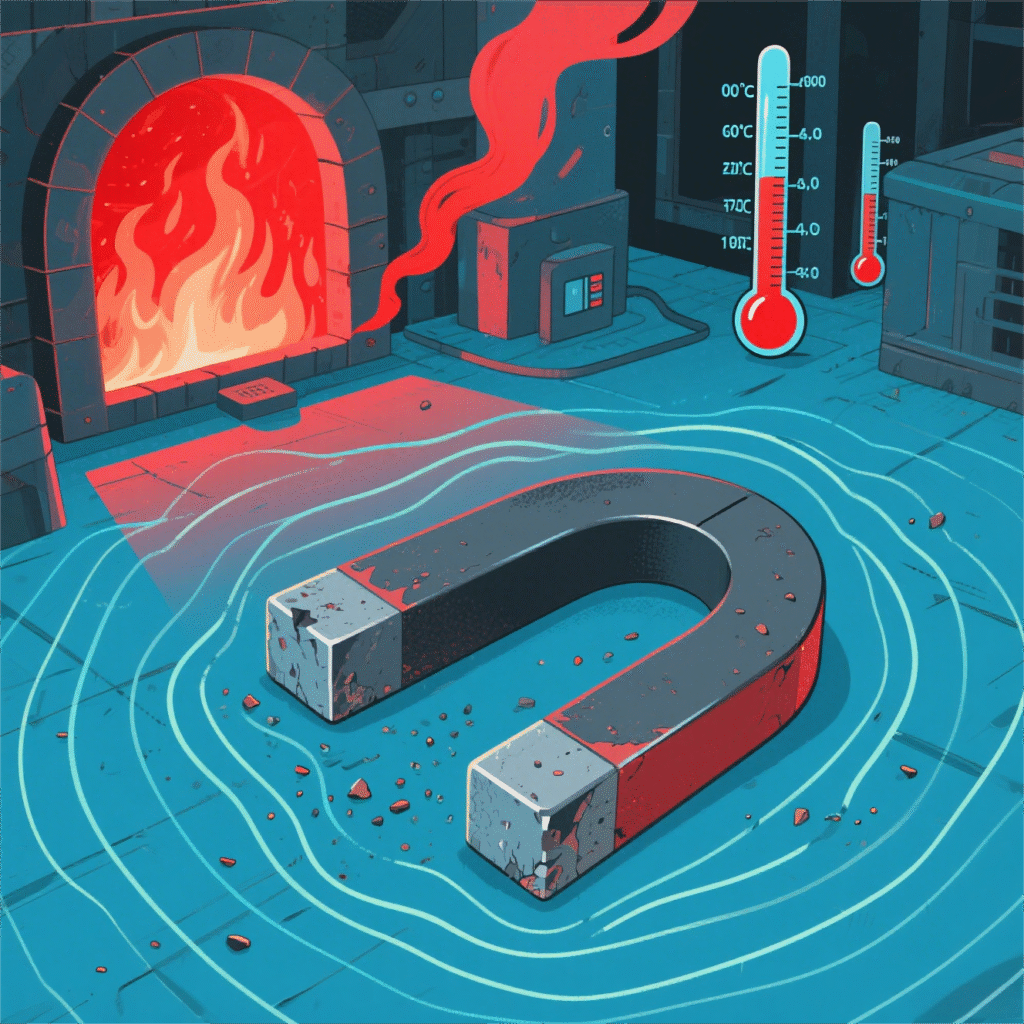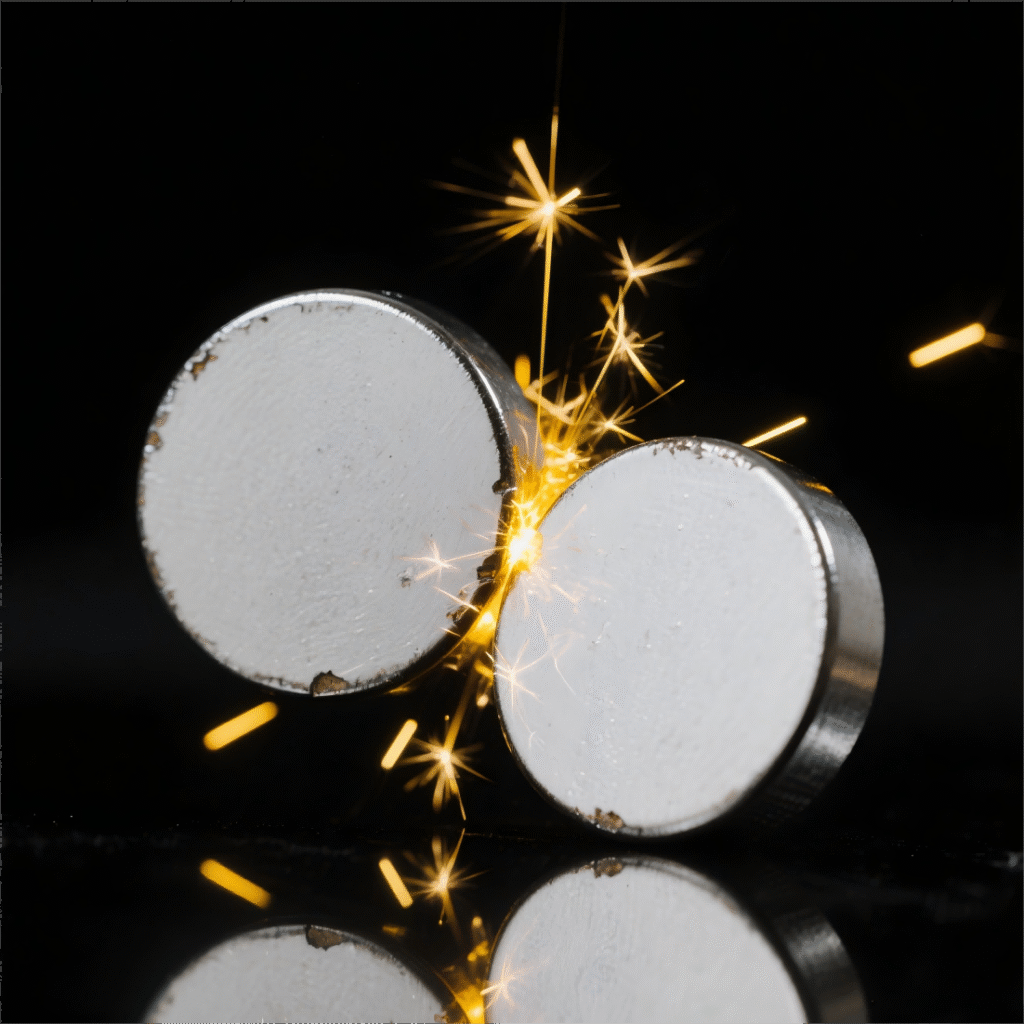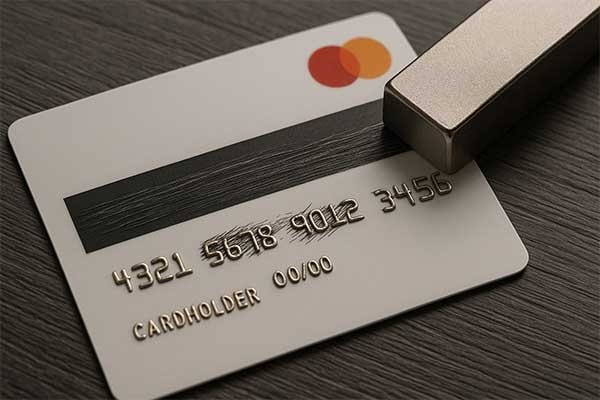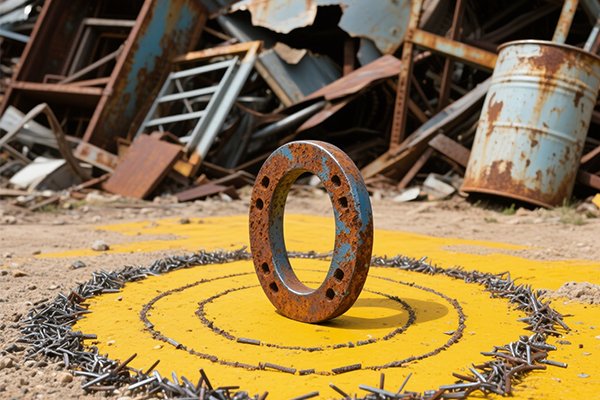You might wonder if magnets wear out. The answer is yes, but this happens slowly. Heat, physical impact, strong magnetic fields, and chemical reactions can all weaken a magnet over time. If you understand these causes, you can keep your magnets strong for longer. Knowing how magnets wear out helps you protect them from damage.
Important content
Magnets get weaker slowly from heat, hits, strong magnetic fields, and chemical reactions. High heat can move the inside parts of a magnet. If it gets hotter than the Curie temperature, it can lose strength forever. Dropping or hitting magnets shakes their inside parts. This can cause damage that does not go away. Strong magnetic fields nearby and water can make magnets weaker. They do this by messing up the inside or causing rust. Keep magnets in cool, dry places. Handle them with care. Keep them away from strong fields and chemicals to help them stay strong longer.
Why Magnets Wear Out
Temperature
Heat is very bad for a magnet’s strength. High temperatures give the magnet more energy. This can make the domains move out of place. If it gets too hot, the magnet can lose all its power. This is called the Curie temperature. Neodymium magnets lose strength at lower heat than samarium-cobalt magnets. Samarium-cobalt magnets are better at staying strong in heat. This is because their Curie temperature is higher. Scientists use computers to study magnets. They found that even tiny holes can lower the Curie temperature. This means the magnet gets weak at lower heat. To keep magnets strong, keep them away from heat.

Physical Impact
If you drop or hit a magnet, it can get weaker. Hitting a magnet shakes the domains inside. This can knock them out of place. Tests with steel cylinders show even small hits can change the magnet’s field. Big hits can cause damage that does not go away. Scientists use special tests to see how hits change magnets. Some hits only make small changes. Others cause damage that lasts. Be gentle with magnets to keep them strong.

External Fields
Magnets can get weaker if they are near strong magnetic fields. Putting a magnet close to another magnet or an electric device can disturb its domains. Even weak fields can change how the inside of a magnet works. Scientists tested fluids with iron particles and saw changes when they used magnetic fields. Strong fields can change the shape and order of domains. This can make magnets wear out. Keep magnets away from other magnets and electric devices to protect them.
Chemical Changes
Chemical reactions like rust or corrosion can make magnets weaker. When a magnet touches water, air, or chemicals, its surface can change. Over time, this makes the magnet lose mass and get weaker. Scientists measured how much weight magnets lose in different places. Magnets in acid or base lose more mass than in air or plain water. The inside may stay the same, but the outside gets rough and full of holes. This makes the magnet work less well. Keep magnets dry and away from strong chemicals to protect them.
Tip: Keep your magnets in a cool, dry place and handle them gently. This helps magnets last longer and stay strong.
Effects of Wear
Loss of Strength
When magnets wear out, you notice a drop in their strength. This means they cannot hold or attract objects as well as before. You can measure this loss using a pull test. In this test, you attach a steel ball to a spring scale and pull it away from the magnet. The force needed to detach the ball shows how strong the magnet is. If you repeat this test every few months, you can track changes in strength. If you see a drop of more than 15% in six months, you should think about replacing the magnet.
Choose a steel test piece and attach it to a spring scale.
Clean the magnet’s surface.
Place the test piece on the magnet.
Pull the test piece away slowly until it detaches.
Record the force shown on the scale.
Repeat the test for accuracy.
Compare results over time to spot any loss in strength.
You can also look at how wear affects a magnet’s physical properties. The table below shows how certain values change when a magnet faces a 6 mT magnetic field:
Metric | Value / Change | Description / Effect |
|---|---|---|
Elastic Modulus | Lower stiffness due to magnetostriction | |
Microhardness (HV₀.₀₅) | 528 HV (112% higher) | Better hardness and wear resistance |
H/E Ratio | 0.049 | Higher ratio means better wear resistance |
H3/E2 Ratio | 0.026 GPa | Helps prevent cracks and improves durability |
Coefficient of Friction | 25.40% lower | Less friction, less wear |
Wear Track Width | 41.83% smaller | Smaller wear area, better resistance |
Thermal Stress | 19.63% lower | Less risk of cracking |
Regular testing and tracking help you know when magnets wear out and need replacement.
Temporary vs Permanent Loss
Not all loss of magnet strength is permanent. Sometimes, you can restore a magnet’s power. For example, if a magnet gets weak from a nearby strong field, you can often fix it by moving it away from the source. Cooling a magnet after mild heating may also help it recover. However, if the magnet faces high heat above its Curie temperature, or if it suffers from corrosion or cracks, the loss becomes permanent. You cannot restore the original strength in these cases.
You should test your magnets often, especially if you use them in important jobs. Use a Gauss meter or a pull test to check their strength. If you notice a steady drop, you know the wear is likely permanent. By understanding the difference between temporary and permanent loss, you can decide when to replace your magnets and keep your equipment working well.
Preventing Magnet Wear
Storage Tips
You can keep your magnets strong by storing them the right way. Place magnets in a cool, dry area. Avoid places with high heat or moisture. Use a soft cloth or plastic container to keep dust and dirt away. If you have more than one magnet, store them with spacers or keepers. This stops them from sticking together and losing strength. For large magnets, use a wooden box or padded case. Label the storage area so others know to handle with care.
Tip: Store magnets away from electronics and credit cards. Strong magnets can damage these items.

Handling Advice
Handle magnets gently to prevent damage. Hold them with both hands if they are large or heavy. Do not drop or hit them. Sudden impacts can weaken the magnetic force. When you separate two magnets, slide them apart instead of pulling them straight away. This reduces stress on the material. If you use magnets in a project, check them often for chips or cracks. Replace damaged magnets right away.
Here is a quick checklist for safe handling:
Wear gloves if the magnets are strong.
Keep magnets away from children and pets.
Avoid placing magnets near metal tools.
Inspect magnets before and after use.
Environmental Protection
Protect your magnets from harsh environments. Water, chemicals, and salty air can cause rust or corrosion. You can coat magnets with paint, plastic, or rubber to block moisture. If you use magnets outdoors, choose types that resist corrosion, like samarium-cobalt. Clean magnets with a dry cloth. Never use harsh cleaners or soak them in water.
Environment | Risk | Protection Method |
|---|---|---|
Humid areas | Rust | Use sealed containers |
Chemical labs | Corrosion | Apply coatings |
Outdoors | Weathering | Pick resistant types |
Remember: Simple steps can help your magnets last much longer.
You now know the main reasons magnets wear out: heat, physical impact, strong magnetic fields, and chemical changes. Most of the time, you can slow this process by following simple steps:
Store magnets in a cool, dry place.
Keep them away from moisture and strong fields.
Take care of your magnets, and you will keep them strong for years.
How can you tell if a magnet is getting weaker?
You can test your magnet’s strength by seeing how many paperclips it can hold or by using a pull test. If it holds fewer items than before, it is getting weaker.
Can you recharge a worn-out magnet?
You can sometimes recharge a magnet by rubbing it with a stronger magnet. This works best if the magnet lost strength from a weak field or mild impact. Severe damage or heat usually cannot be fixed.
Do all magnets wear out at the same speed?
No, different magnets wear out at different speeds. Neodymium magnets lose strength faster in heat or moisture. Ferrite magnets last longer in tough conditions. Choose the right type for your needs.
What should you avoid to keep magnets strong?
Keep magnets away from heat, water, and strong magnetic fields.
Handle them gently and store them in a dry place.
Use coatings or cases for extra protection.
Why do magnets lose strength when they rust?
Rust eats away at the magnet’s surface. This makes the magnet lose mass and weakens its magnetic force. You should keep magnets dry to stop rust from forming.

